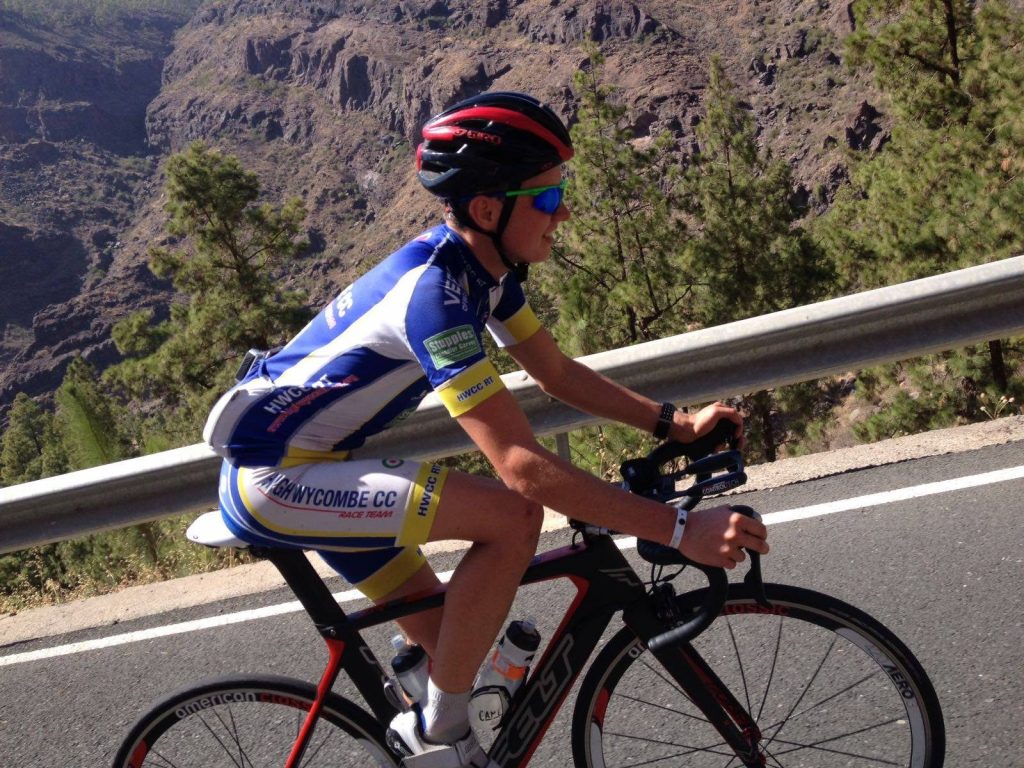
What To Feed A Teenage Athlete? An interview with Seb and Ann Garry (GB Triathlete and his Nutritionist Mum)
As many of you know I have the privilege of running nutrition workshops for those athletes who are generally at the top of their sport in their age category and therefore already representing their country. Whilst the sports vary from fencing to volleyball I have found that the practical nutrition advice I can offer really helps athletes and their parents to make informed decisions. In this interview I was lucky enough to be able to ask questions of not only an elite teenage athlete and triathlon star Seb Garry but also pose questions to his nutrition expert mum, Ann Garry. You’ll find this interview a fascinating read, especially if you have a very sporty child.
Ann Garry (AG): Hi Jenny. I am Ann Garry – a Nutritional Therapist, wife and mother to two sporty children, living in Marlow Bucks
Seb Garry (SG): Hi Jenny. I am Seb Garry – a triathlete, in my last year of sixth form at SWBGS in Marlow.
JT: Tell us about your son Seb. What is his chosen sport? How did he get into it?
AG: I will let Seb tell his story…
SG: It was early Summer, 2013. A friend from school asked me if I would join him in a Triathlon at the local Dorney lake. At this time I had just resigned from rowing and didn’t really have a direction in sport. So after begging and borrowing the kit (including a racing bike) I took part in that first race. It was thrilling and I did quite well, despite never having swum in a wetsuit or in open water before and not really knowing what I was doing! This lit the spark and I bought myself a road bike and found myself a triathlon club. Three years later and a lot of hard training, I won the European age group titles for both Duathlon and Triathlon this season and have been nominated by British Triathlon for the award for Top Male Age group triathlete – voting is still open, shameless plug!!
JT: You’ve always had an interest in nutrition and healthy eating but how has that changed since Seb started excelling at Triathlon?
AG: Seeing the challenges of high level training and competing at close quarters has developed my interest in nutritionally supporting Seb so that he can stay injury free and continue to improve. It can be quite complex to unravel the cause of any issues and work out strategies to support both training and racing.
JT: What’s been your biggest nutritional challenge to date?
AG: Triathlon presents very unusual nutritional challenges related to the transition from swim to bike to run. For example, the position of the body during the cycle ride does not support the transit of food through the gut. This means that when they move from the bike to the run, athletes can experience digestive issues. Also it is an endurance sport but with a requirement to be able to sprint in the last 2 km.
JT: How do you overcome such challenges?
AG: Seb has a very clean diet during training, based on lean protein and masses of colourful veg, keeping starchy carbs to a minimum. This helps to maintain his lean body composition. However for competitions we have had to develop a totally different strategy, working with quick release, low fibre carbs that can be processed and eliminated so that they don’t cause abdominal discomfort during the race. This has involved some trial and error, but we have a pretty good strategy now.
JT: What’s the best advice you could give to a parent of a sporty child?
AG: Recognise that young, growing athletes need the right balance of nutrients to fuel growth, repair and performance and that just letting the child eat anything they want to because they are ‘burning it off’ is not a good strategy for optimal performance and health. My daughter has been a competitive swimmer since she was 11 (now 19) and I am often surprised to see parents at galas encouraging their children to eat bags of sugary, jelly sweets to ‘keep their energy levels up’!
AG: Recognising that a different nutritional approach is often needed for race days/matches, compared to the regular day to day training. Also there is often a need to be creative in thinking how to fuel your young sporty teen when the logistics are complicated. What I mean is that a child may have to go straight from school to a training session, without time to have a meal at home – so food has to be eaten in the car. In these situations it is easy to just use sandwiches and commercial snacks. However with a bit of planning and creativity, there are so many more options that will fuel your sporty son/daughter in a much more sustained way.
Breakfast: LARGE bowl granola, chopped fruit (berries, apple, banana), goji berries, mixed chopped nuts with plain greek yoghurt. A shot of Cherry Active in water.
Snack: Veg + Hummus, plus a Bounce Ball
Lunch: 4 egg omelette (pepper, onion, cheese, ham) plus salad
Snack: Whole Earth Peanut butter, apple slices and granola ‘sandwiches’
Dinner: Roasted veg with quinoa, Roast chicken and chilli/garlic tenderstem broccoli
Snack: 4 squares Lindt dark chocolate (70%), dark choc rice cake with peanut butter
3-4 litres of water every day
Large dish of rice/pasta with a 2 egg omelette – no veggies. Principle is simple carbs with good quality protein , keeping fibre content low. Lots of water during the days before a race.
In the morning before the race (could be 5am!) – 2 slices toast/bread with peanut butter + water, just to top up glycogen stores.
Anything he fancies! Often we are away from home/overseas (US, Germany, Portugal in last 12 months) and so it depends on what is available and the time of day. For example, this year’s European Duathlon in Kelkar, Germany finished at 8pm and by the time the presentation ceremony was over it was 10pm! So that night it was a kebab and chips!! Seriously though, he always makes sure he has a ‘proper’ meal, not just a snack and would include starchy carbs (rice, pasta, potatoes) with a good source of protein.
